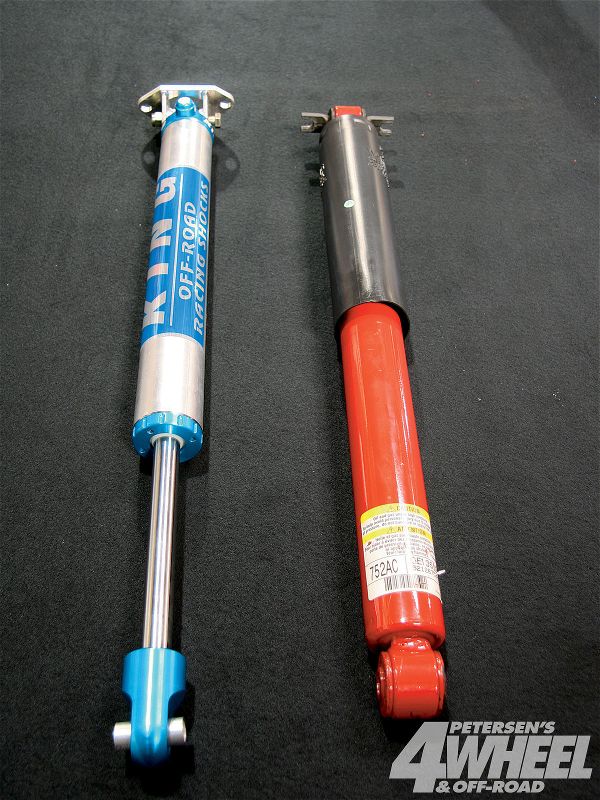
 Ali Mansour
Brand Manager, 4WD & Sport Utility
Ali Mansour
Brand Manager, 4WD & Sport Utility
Most of the time when someone speaks to you about valves and fluid bypass he's referring to your health, not your ride. Don't fear, as this is not Anatomy 101, but rather a closer look into aftermarket suspension dampers, aka shocks.
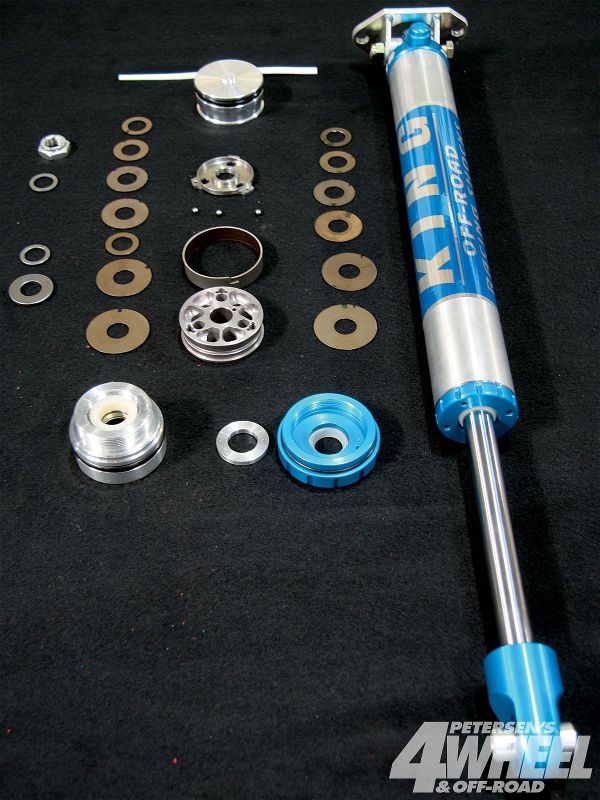
The primary goal of a shock absorber is to control suspension oscillation. As your suspension cycles, the vehicle's weight, both sprung (cab, occupants, engine, and so on) and unsprung (axles, tires, and wheels) creates kinetic energy.
To control this cycle, most aftermarket shocks use a medley of valve shims, nitrogen pressure, fluid, and finely tuned pistons to convert the kinetic energy into heat energy so it can be dissipated through the absorber.
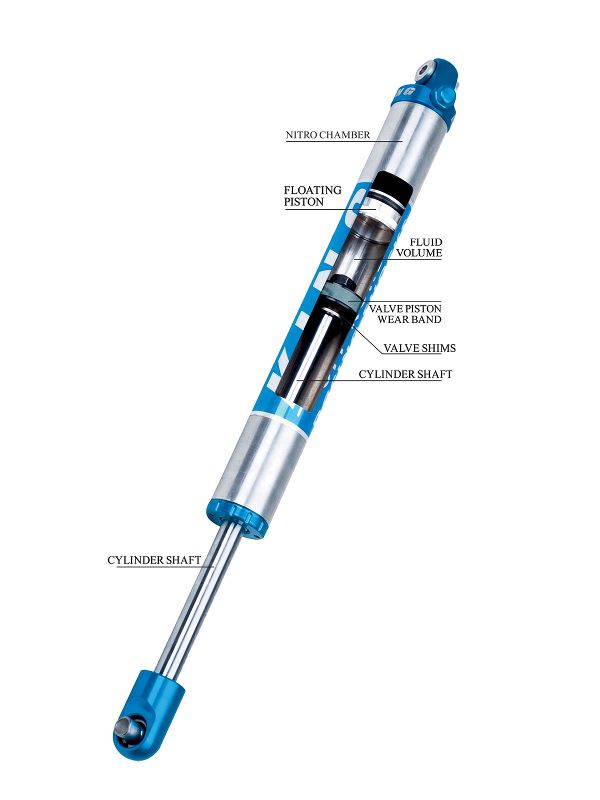
While nearly all factory shocks work well on the highway, the OE absorbers often have a tough time handling serious off-road terrain. So instead of spending a lot of time on stock dampers that you're sure to replace, we are going to take a look at an entry-level performance absorber from King Shocks.
King's wide variety of performance shocks includes triple bypasses, coilovers, and remote-mounted fluid reservoirs, but our focus is on single-cylinder factory replacements. For a closer look at these bolt-on suspension enhancers we headed down to the performance shock experts at King Shock Technology. For example purposes we tore into a 2.0 King shock that's designed for the '07-current Jeep Wrangler JK. To find out more information about shock technology and locate a set of performance dampers for you ride, visit www.kingshocks.com.
Valves
Each shock is equipped with a set of upper and lower valve shims that sandwich the fluid position. With the piston secured to the cylinder rod, these heat-tolerant shim packs control the shock's motion upward (compression) and downward (rebound). As pressure forces the rod into the cylinder the valves bend to let fluid pass at a certain rate, and as the rod drops out the opposing valves kick into action. The shims are also speed sensitive, so they can control both high- and low-speed shock velocity. Adding or modifying valve shims will alter the shock's damping characteristics.
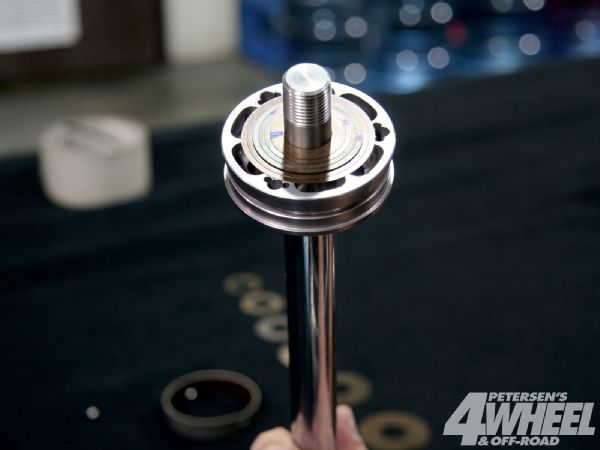
Pistons
Most aftermarket shocks have two pistons: a lower one fitted between valves and attached to the cylinder rod, and a floating one to separate the nitrogen chamber. The valve piston uses a wiper seal and a Teflon-coated brass wear band to increase the shocks life and prevent leaks. The two most common piston types are linear and digressive. The linear is a high-flow-rate piston that offers little resistance. The digressive style is a lower-fluid-rate piston and often gives the shock a slower and more controlled motion.
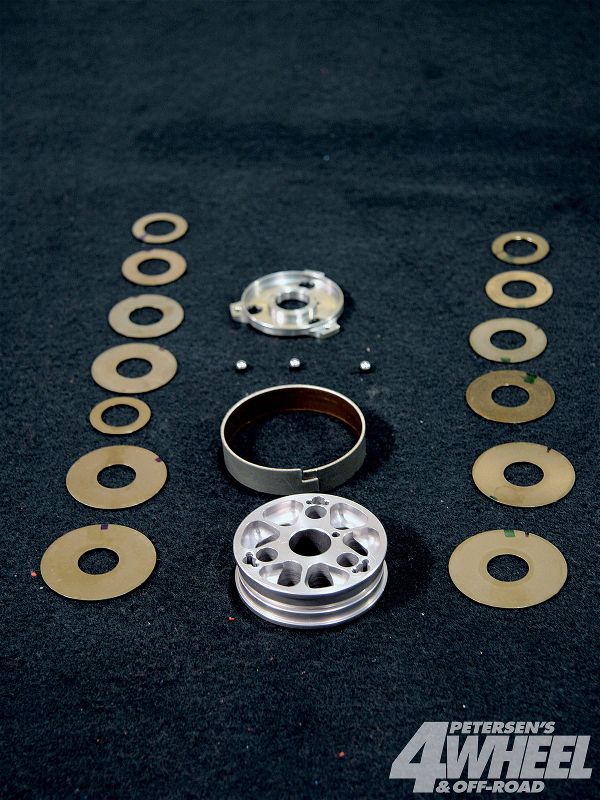
Hard Charge
King uses a proprietary shock fluid, but the trick liquid is only a portion of the shock equation. To pressurize the cylinder and help control the motion of the shock, a floating piston is used to isolate an internal nitrogen chamber. By adding or lowering the nitrogen pressure you can adjust the characteristics of the shock. Though pressure varies by application, there is always a minimum charge to prevent the fluid from cavitating.
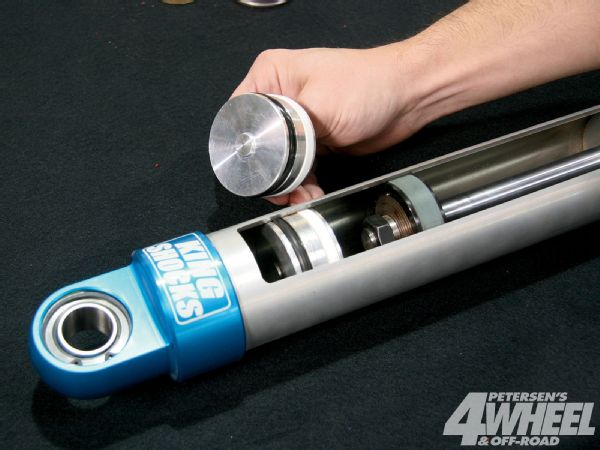
Hot Rod
As the shock's piston rod travels through the cylinder body it is either entering compression or exiting rebound. The compression stroke controls the upward damping motion of the piston, while the rebound stroke controls the release or downward movement.
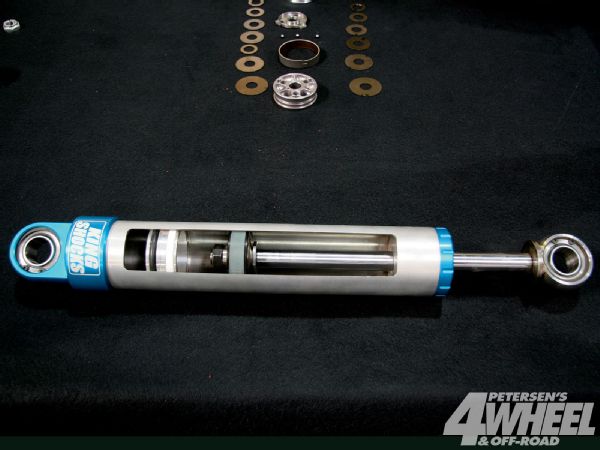
Simulated Cycle
In addition to real-world testing, aftermarket shock manufacturers like King use a state-of-the-art shock dyno to dial the absorber's performance. This shock diagnostics machine can simulate on- and off-road conditions, and engineers can monitor the performance levels and changes through a data graph similar to what they can do with a car dyno.
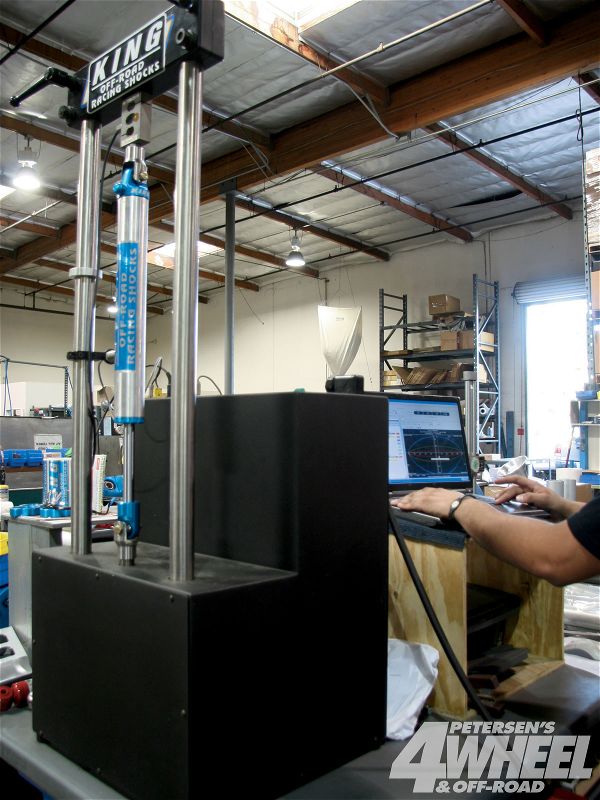
Better Bolt-Ins
A great benefit of purchasing aftermarket performance shocks is the tech support. King understands that not everyone is a rockcrawler or a Baja racer. When you purchase a set of shocks, King can work with you over the phone to determine what valving is right for your rig and driving style. Depending on the shock type you can also send your shocks in to be tuned, reconfigured (to accommodate a new suspension lift or travel requirements), and even upgraded to an external reservoir.
